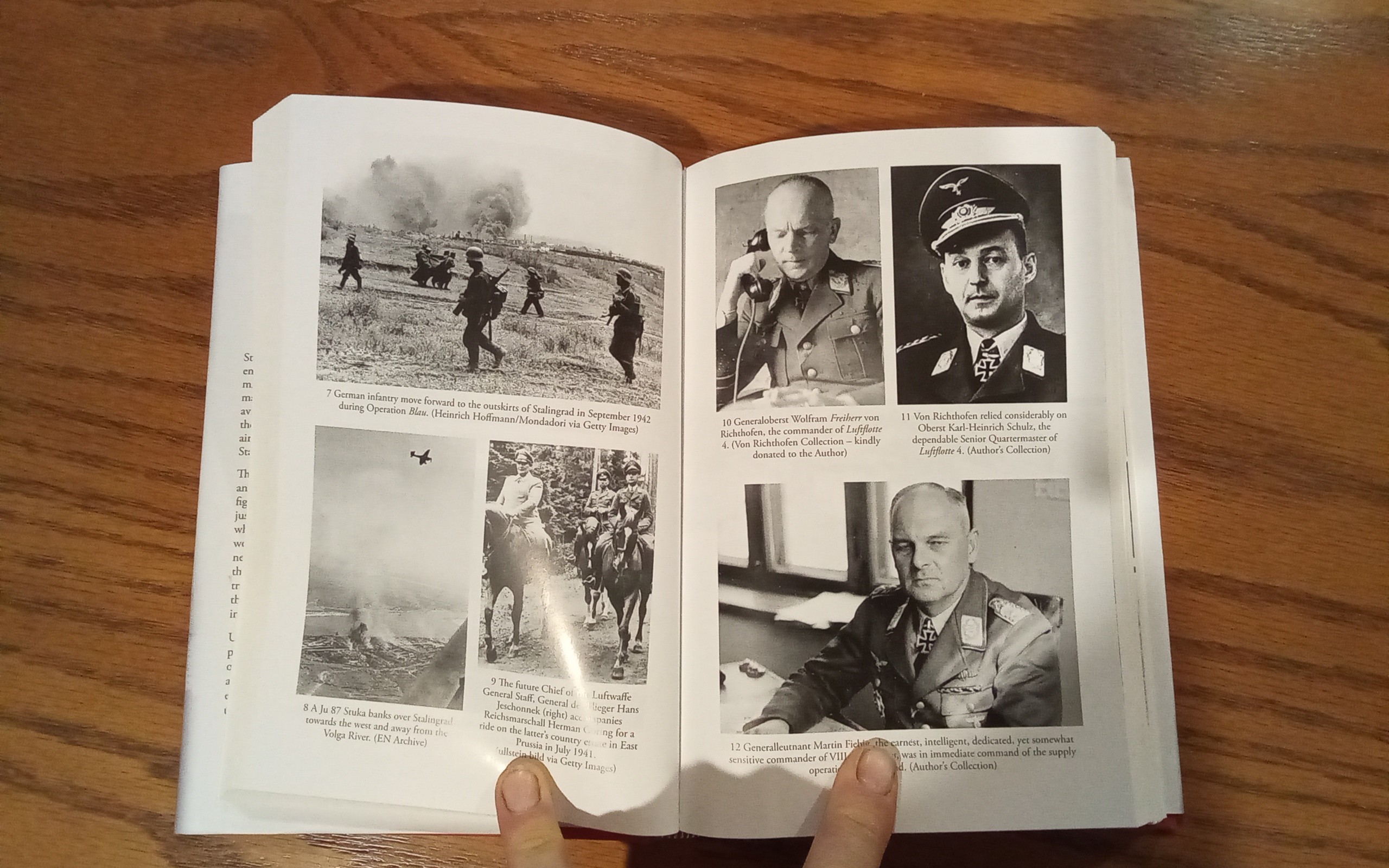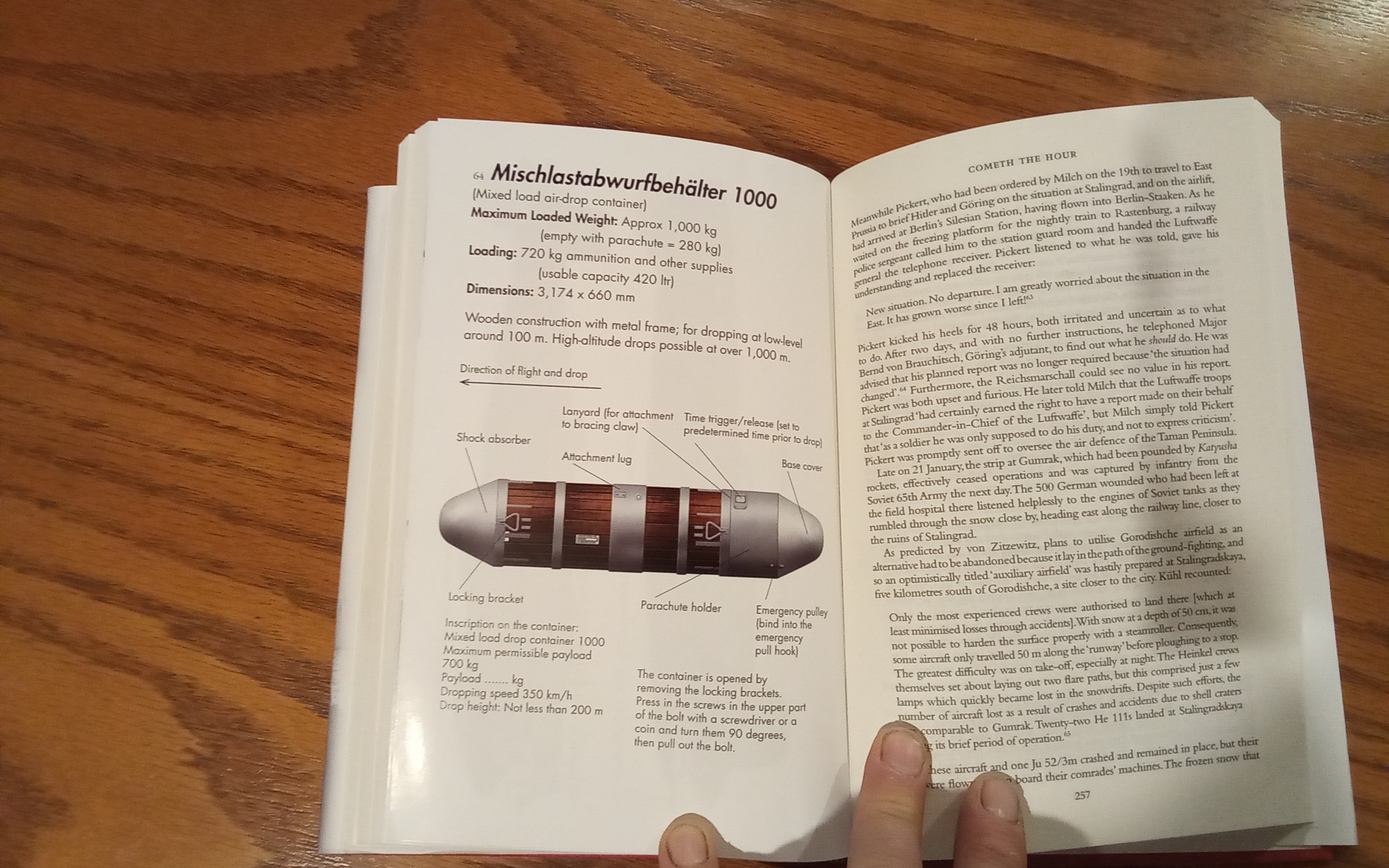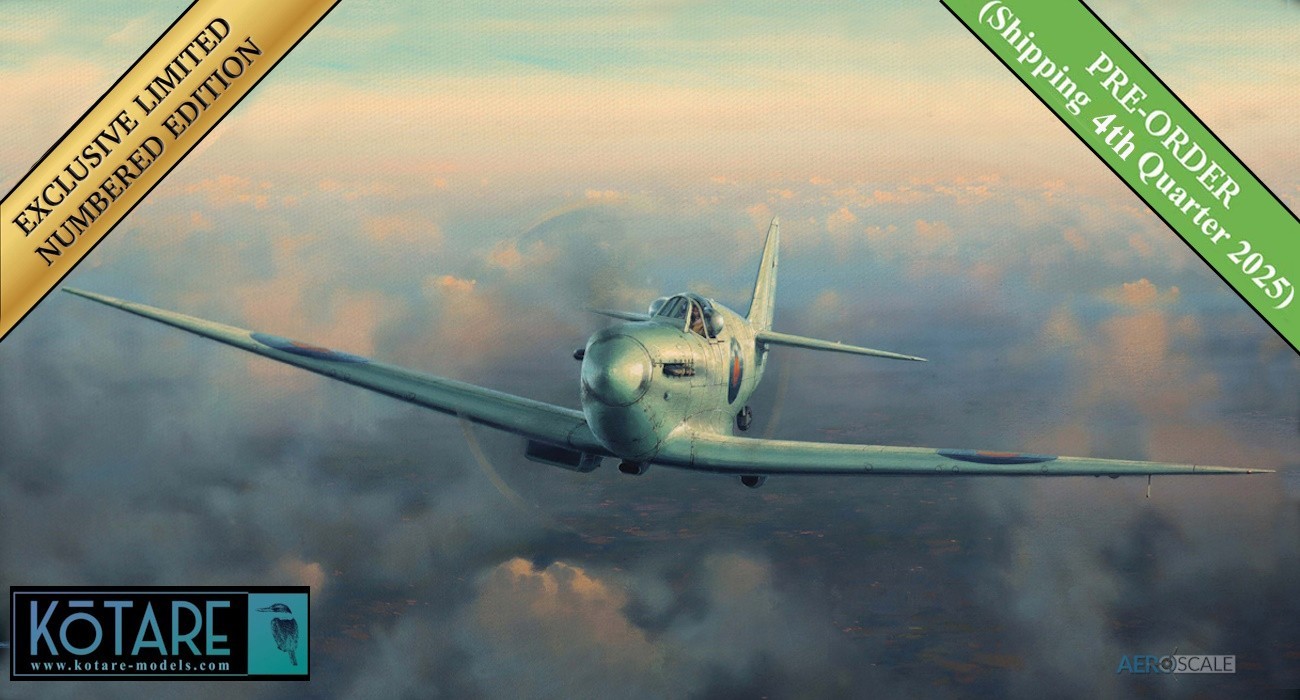
Some basics
Stalingrad ranks as one of the most infamous, savage and emotive battles of the 20th century. It has consumed military historians since the 1950s and has inspired many books and much debate. This book tells the story of the operation mounted by the Luftwaffe to supply, by airlift, the trapped and exhausted German Sixth Army at Stalingrad in the winter of 1942/43. The weather conditions faced by the flying crews, mechanics, and soldiers on the ground were appalling, but against all odds, and a resurgent and active Soviet air force, the transports maintained a determined presence over the ravaged city on the Volga, even when the last airfields in the Stalingrad pocket had been lost.
Yet, even the daily figure of 300 tons of supplies, needed by Sixth Army just to subsist, proved over-ambitious for the Luftwaffe which battled against a lack of transport capacity, worsening serviceability, and increasing losses in badly needed aircraft.
Using previously unpublished diaries, original Luftwaffe reports and specially commissioned artwork, this gripping battle is told in detail through the eyes of the Luftwaffe commanders and pilots who fought to keep the Sixth Army alive and supplied.
A picture of words, I started to highlighted possible quotes, but there were too many of them.

Review
Having been a modeler of Axis subjects for some time, I am familiar with the debacle of the German Sixth Army at Stalingrad, and how, in 1943, Paulus walked into Soviet captivity with just over a quarter of a million troops. What I am less familiar with was the effort by the Luftwaffe to sustain the army in the hope of holding Stalingrad, before going on the offensive again in summer.
This book gives a good analysis of that effort, and how it was doomed to fail due to a myriad of reasons, not least of which was that the Luftwaffe was, largely, completely ill prepared to sustain such an effort, the logistics were insurmountable, the weather was against the effort from the start, and the Soviets just would not give the Germans a break.
What I appreciate most about the book is that the analysis is focused on the subject, whilst covering the major contributing factors, and it is apolitical (whilst covering the politics of the day). And there is a great section focused on the aircraft themselves, Chapter 9, 'The stalwarts of Stalingrad'. This covers the Junkers Ju 52/3m and 86, and Heinkel He 111. Other aircraft get a mention, too, including the elegant Ju 290A-4, the giant Fw 200C-3, and the rear He 177A-1.
A picture of people, some of those involved...

The author provides good background and context to events, the personalities involved, and discusses some of the limiting factors that impeded the Luftwaffe in their efforts. Some of the basic things like planes being rushed to the front that were ill-prepared to be used for cargo supply, only to then sit at the airfield taking up space, preventing using aircraft from operating. There are examples of (stupidity in hindsight) bravery by the German pilots of taking off in fog and snow in near whiteout conditions, and the means the pilots used to find their comrades and deliver diminishing quantities of food and ammo. The author goes to some lengths calculating the capabilities of the aircraft, the requirements of an army surrounded, the number of flights necessary, and how the Luftwaffe fell further and further behind with each missed drop or day passed with no, or little, deliveries. About the only thing missing is something from the men on the ground and how, I imagine, they would look to the sky for help, only to be disappointed time and time again with nothing.
A picture of planes, planes, planes.

In a sense, this is a chronology of the slow death of the Sixth Army, made all the more harrowing by the fact it was unnecessary, as the generals on the ground gave Hitler options, which he steadfastly refused.
Something that did strike me as particularly galling for the men on the ground was that whilst all this was unfolding, Goering himself was in Paris looking for artworks to 'acquire'.

Conclusion
A great read, balanced, detailed, and supported with some great images, maps, and profiles. I learned a lot reading this book, it is well researched, an easy read, and one I'd recommend to anyone looking to understand the German failure at Stalingrad.
And, the thingy...

To Save An Army, The Stalingrad Airlift
Author: Robert Forsyth
Published: 10 Nov 2022
Format: Hardback & Ebook (PDF),
Edition: 1st
Extent: 352 pages
ISBN 9781472845382
Imprint: Osprey Publishing
Illustrations: A 32-page plate section with both colour and black and white images.
Available here from Osprey Publishing
Please remember, when contacting retailers or manufacturers, to mention that you saw their products highlighted here – on AEROSCALE.



























